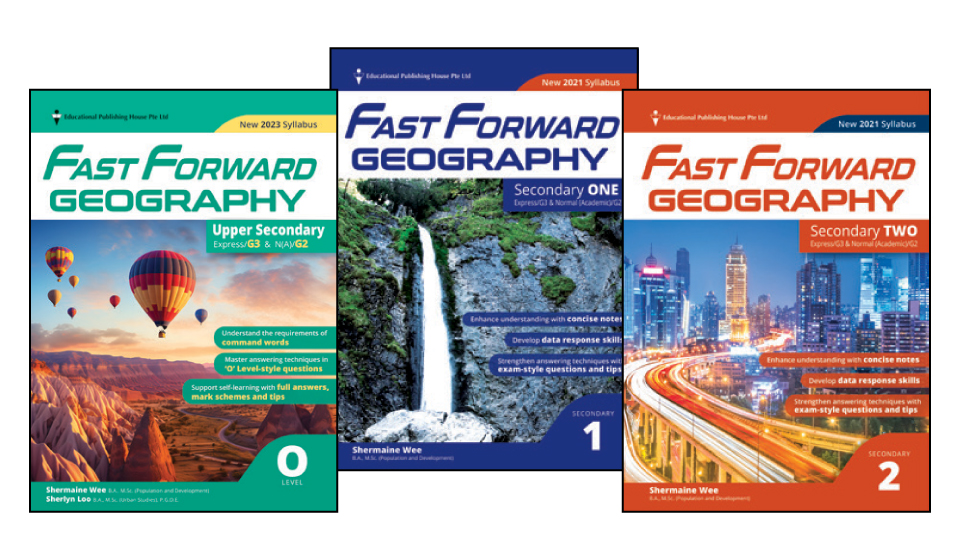About Us
Members Enjoy 10% Off Storewide – Sign In to Save Instantly!




Aug 2024

Here’s how the new Upper Secondary Geography syllabus differs from the previous one.
Aug 2024 | By Shermaine Wee, Sherlyn Loo & EPH Editorial Team
One significant change to the 2023 Geography syllabus is the reorganisation of content. The new syllabus is structured into five clusters: Geography in Everyday Life, Tourism, Climate, Tectonics, and Singapore. This new structure provides a broader and deeper coverage of geographical topics, ensuring students gain a comprehensive understanding of both local and global issues.
A second key difference is the introduction of the new clusters, Geography in Everyday Life and Singapore (for Geography only). The Geography in Everyday Life cluster grounds geographical concepts in familiar environments, forming a foundation for understanding different contexts presented in the subsequent clusters. The Singapore cluster examines Singapore’s human and physical characteristics, along with its opportunities and challenges, through a geographical lens.
The third key difference is the introduction of flexibility in the Humanities (Geography) syllabus. Schools can now choose between the Climate and Tectonics clusters, in addition to the mandatory Geography in Everyday Life and Tourism clusters. For the Geography syllabus, students must learn all clusters.
The differences between the old and new syllabuses are outlined in the table shown on the right.
To keep pace with the new syllabus, students can refer to Fast Forward Geography (Upper Secondary) ($14.90), which includes practice papers aligned with the latest assessment requirements. Tips and marks schemes are also included in the answers. Lower Secondary students can refer to Fast Forward Geography (Secondary One/ Two) ($13.90 each).
Customer Care
Retail Stores
Corporate Sales
About Us
Customer Care
Retail Stores
Members
Corporate Sales
Gift Voucher

© Copyright 2025 Popular Book Company Pte Ltd .197500612M All Rights Reserved.

